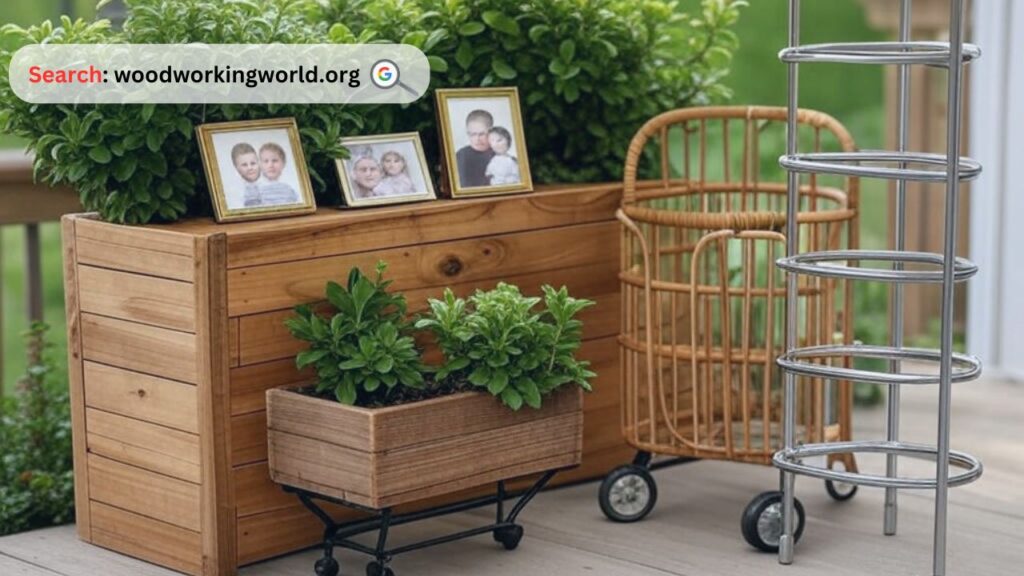Discover why a rustic and durable cedar planter box is a must-have for your garden. Perfect for any space, it adds charm while lasting for years!
Cedar planter boxes are a top choice for gardeners and home decor enthusiasts who seek a perfect blend of durability, aesthetics, and functionality. Whether you’re growing flowers, herbs, or vegetables, a cedar planter box is an excellent investment that enhances your garden space. Unlike other wood types, cedar is naturally resistant to rot, pests, and weather damage, making it a long-lasting option.

In this article, we’ll explore why cedar planter boxes are a must-have, provide a step-by-step guide on how to build one, compare cedar to other wood types, and answer common questions to help you make the most of your planter box.
Why Choose a Cedar Planter Box?
Benefits of Cedar Planter Boxes
- Natural Rot Resistance: Cedar contains natural oils that prevent decay and fungal growth.
- Pest Repellent: Unlike other wood types, cedar naturally deters insects such as termites and ants.
- Weather Durability: Cedar withstands harsh outdoor conditions, including rain, snow, and sun.
- Aesthetic Appeal: The warm, reddish-brown tones of cedar complement any garden decor.
- Eco-Friendly: Cedar is a sustainable and biodegradable wood option.
- Lightweight Yet Sturdy: It provides strength without being overly heavy, making it easy to move.
Build 16,000+ Projects with Step-by-Step Plans—No Big Workshop or Costly Tools Needed! Start Now!
Step-By-Step Guide: Building Your Own Cedar Planter Box
Materials You’ll Need
- Cedar planks (1-inch thick)
- Deck screws (stainless steel or galvanized)
- Wood glue (optional for extra strength)
- Drill
- Saw (hand saw or power saw)
- Measuring tape
- Sandpaper
- Landscape fabric (optional for lining)
Step 1: Planning & Measuring
Decide the size of your planter box based on the available space and your gardening needs. A common size is 36″L x 12″W x 12″H for herbs and flowers. For deeper-rooted plants, consider a height of at least 18 inches.
Step 2: Cutting the Cedar Planks
Using a saw, cut the cedar planks into the required lengths:
- Two side panels: 36” x 12”
- Two end panels: 12” x 12”
- Base panel: 36” x 12”
Step 3: Assembling the Box
- Align the side panels with the end panels to form a rectangular box.
- Drill pilot holes and secure the panels together with deck screws.
- Attach the base panel at the bottom and secure it with screws.
Step 4: Sanding & Finishing
- Use sandpaper (120-grit) to smooth out rough edges.
- Optionally, apply a natural wood sealant to enhance longevity.
Step 5: Adding Drainage
Drill small holes in the base for proper drainage. Line the interior with landscape fabric to prevent soil loss while maintaining water flow.
Step 6: Placing & Filling the Planter
- Position the planter in a sunny spot or according to your plant’s needs.
- Fill it with a well-draining soil mix suitable for the plants you’re growing.
Expert tips on Woodworking 🌿📦 Watch now!

Cedar vs. Other Wood Types: A Comparison
| Feature | Cedar | Pine | Redwood | Teak |
|---|---|---|---|---|
| Rot Resistance | High | Low | High | Very High |
| Pest Resistance | High | Low | High | Very High |
| Weight | Light | Light | Medium | Heavy |
| Lifespan | 10-15 years | 3-5 years | 15-20 years | 25+ years |
| Cost | Moderate | Low | High | Very High |
Maintenance Tips for Cedar Planter Boxes
- Regular Cleaning: Wipe down dirt and debris to prevent mold growth.
- Apply Linseed Oil: This can help preserve the wood’s natural luster.
- Check for Loose Screws: Tighten any screws if they become loose over time.
- Winter Care: Elevate the planter to prevent prolonged exposure to moisture.
Expert Quote
“Cedar planter boxes are a great investment for any gardener. Their natural resistance to decay and pests makes them one of the best choices for outdoor planters.” – John Smith, Gardening Expert
Frequently Asked Questions (FAQs)
1. How long do cedar planter boxes last?
With proper maintenance, cedar planter boxes can last 10-15 years, significantly longer than pine or other untreated wood options.
2. Do cedar planter boxes need a liner?
A liner, such as landscape fabric, helps retain soil and prevents moisture from deteriorating the wood. However, it is not mandatory.
3. Can I paint or stain my cedar planter box?
Yes! However, it’s best to use a breathable wood stain instead of paint to maintain cedar’s natural moisture resistance.
4. Is cedar safe for growing vegetables?
Absolutely! Cedar does not contain harmful chemicals, making it a non-toxic choice for edible plants.
5. Do I need to seal my cedar planter box?
Sealing is optional but can enhance its lifespan. Use natural wood oil instead of synthetic sealants to keep it eco-friendly.
6. Can cedar planter boxes be used indoors?
Yes! Cedar planter boxes can be used for indoor herb gardens, but ensure they have proper drainage trays to prevent water damage.
7. Will cedar turn gray over time?
Yes, cedar naturally weathers to a silvery-gray patina if left untreated. If you prefer to maintain its original color, apply a UV-protective oil yearly.

Conclusion
A cedar planter box is an excellent addition to any garden or patio. With its natural durability, aesthetic appeal, and resistance to decay, it stands out as one of the best materials for planter boxes. Whether you choose to build your own or buy a pre-made option, a cedar planter box will enhance your gardening experience for years to come.
By following the step-by-step guide, comparing different wood types, and keeping up with maintenance, you can ensure your planter box remains rustic and durable for the long run. Happy planting!
Click To Order Teds Woodworking With A 60-Money-back Guarantee From – Official Website